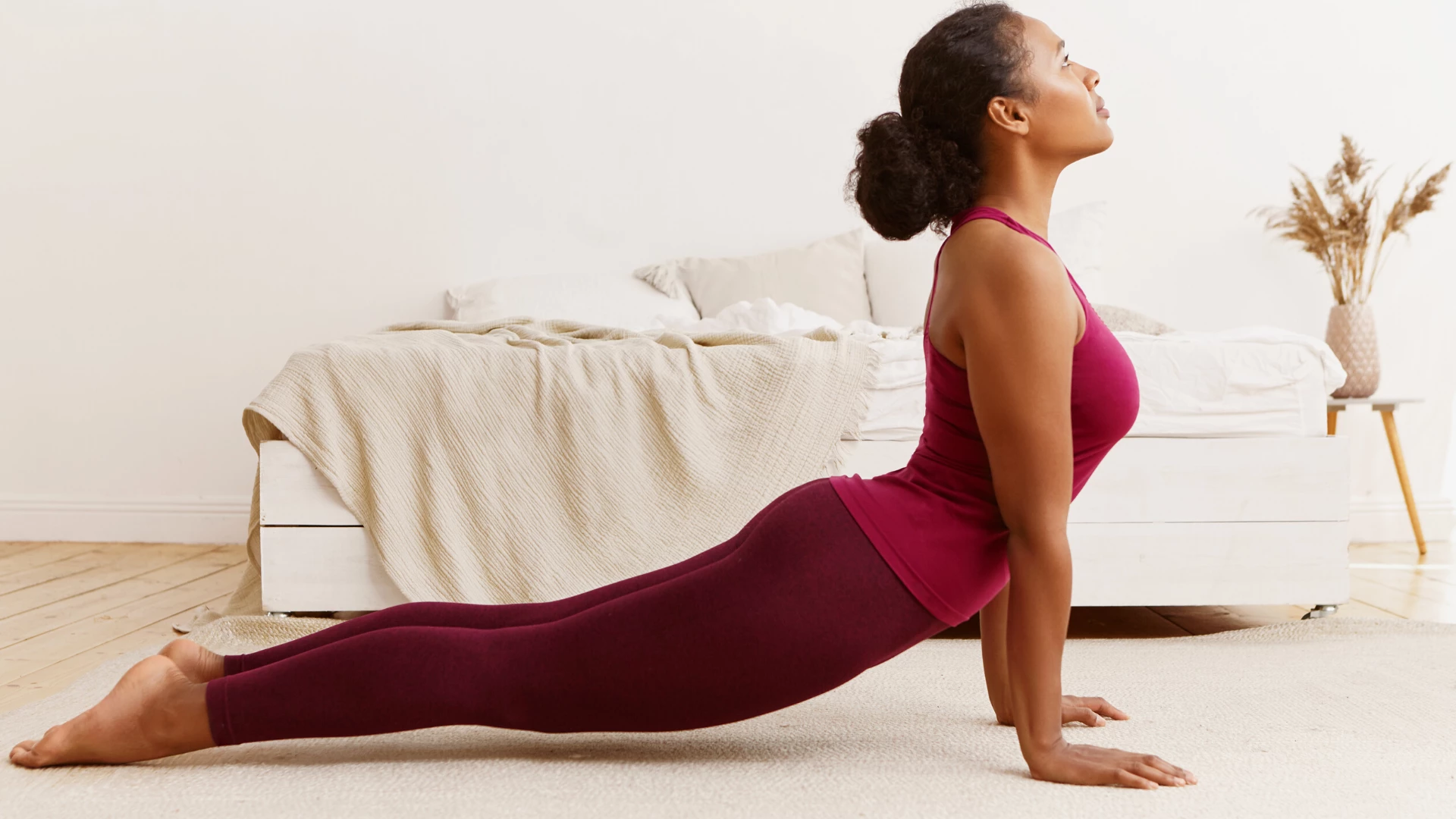3 Awesome Yoga Hacks For Mastering Upward-Facing Dog Pose

Especially for those who are new to yoga, Urdhva Mukha Svanasana, or Upward-Facing Dog Pose, is challenging. It can be a frustrating experience to see other students in the room seamlessly glide in and out of the pose with ease and grace. Even an experienced yogi can benefit from an instructor’s clear instruction and pose variations. The expectation seems to be that most students in the room know how to practice it well enough that the instructor doesn’t need to take the time to break it down.
There are many issues to the above assumption, and to the subsequent decisions, many yoga teachers make when teaching all-levels yoga classes. The room becomes a fun playground for the most experienced in the room, but can be a silent torture chamber for those who may be less experienced yogis. Because of the Vinyasa flow structure of these yoga classes, teachers don’t have time to break down the foundations of yoga poses, leaving students to do their best to mimic the alignment they see in their instructor or in other yogis around the room.
Invariably, there are many foundational pieces of information missing from most students’ understanding of how to practice most yoga poses. Unless a yogi attends more advanced yoga workshops or enrolls in a yoga teacher training, most students continue practicing poses in various states of misalignment for years. This can result in injury, strain, or disenchantment on the part of the understandably frustrated student
Why Is Upward-Facing Dog pose So Difficult for beginning yoga students?
In the full expression of Upward-Facing Dog, your body is held suspended above the ground solely by your hands and the tops of your feet. Your arms and shoulders have to be very strong to accomplish this feat, which can be a struggle for those yogis still developing strength in their upper body. Your back is also in an extended position from your tailbone through your upper thoracic spine, which may feel unnatural or difficult since most people spend more time with their backs in flexion rather than extension. Your chest muscles, hip flexors, and abdominal muscles are also lengthened, creating a sense of stretch and openness in the entire front of your body. The combination of these many actions and alignments makes for a daunting proposition to try to tackle Upward Facing Dog on your own.
yoga Backbending Essentials
Many parts of the body play an active part in yoga backbending poses. However, you can identify the same universal principles of alignment in most backbending poses. I’ve broken these rules down by body part:
- Back: Emphasize extension in your upper thoracic spine and avoid overarching into your lumbar and cervical spine – see video number one below
- Legs: Maintain a neutral position in your thighs. Be careful not to externally rotate
- Arms: Focus on external rotation in your upper arms
- Pelvis: Your pelvis needs to move towards a posterior tilt. If you allow your pelvis to spill forward anteriorly, it will result in overarching in the low back
- Hips: Your hip flexors need to lengthen in a backbend
Three Awesome Hacks For A More Successful Upward-Facing Dog pose
Based on the backbending alignment essentials above, the following tips should help you work toward a deeper understanding of how to make Upward-Facing Dog fit your current level of strength and mobility. Modifying poses not only makes them more achievable, but you’re also more likely to gain the intended benefits of the pose when you practice a version that actually works for your body.
Instead of struggling in Upward-Facing Dog with improper alignment and potentially injuring yourself, learn how to customize yoga poses to fit your body. By practicing this yoga pose with modifications, you’ll not only grow in strength and mobility, but you’ll also be creating a healthier relationship with yourself along the way.
-
Prepare Your Hip Flexors
Most yogis don’t realize how significant the role of the hip flexors are in backbending yoga poses, yet they are an integral part of practicing all types of backbends. If the hip flexors are tight, they will pull the pelvis into an anterior tilt, which will overarch the lower back and can cause strain in the lower spine and SI-joints. Lengthening the hip flexors before moving into a backbend allows the pelvis to maintain its neutral alignment, which creates more space and length in the lower back. This also allows you to focus the arch of the backbend in the upper thoracic spine, which is the goal of these poses.

-
Tight Backs: Use Blocks Under the Hands
If you know your back and spine are on the stiff side, try practicing Upward-Facing Dog with blocks, or some other support of similar size, under the palms of the hands. The height created by the blocks allows your spine more space to extend into the backbend.

-
Weaker Upper Body: Use A Bolster Under the Hips
If you are still working on developing strength in your arms and shoulders, this version of Upward Facing Dog is perfect for you! It’s great because it allows you to hold the pose for long enough to focus on the principles of backbending alignment listed above, without the strain and struggle of trying to hold this pose unsupported.
More Practice Tips
Did you find these tips helpful? If so, check out the full 10-minute practice below for even more practice tips and preparation for Upward-Facing Dog.
Also, read...
4 Ways to Practice Locust Pose
5 Keys to Healthy Neck Alignment in Cobra Pose (Bhujangasana)
Uttanasana: Expand Your Breath
Related courses
Breath as Medicine: Yogic Breathing for Vital Aging
Yoga and Myofascial Release: Releasing Chronic Tension with the Bodymind Ballwork Method

Kate is a yoga teacher and content editor at YogaUOnline.




